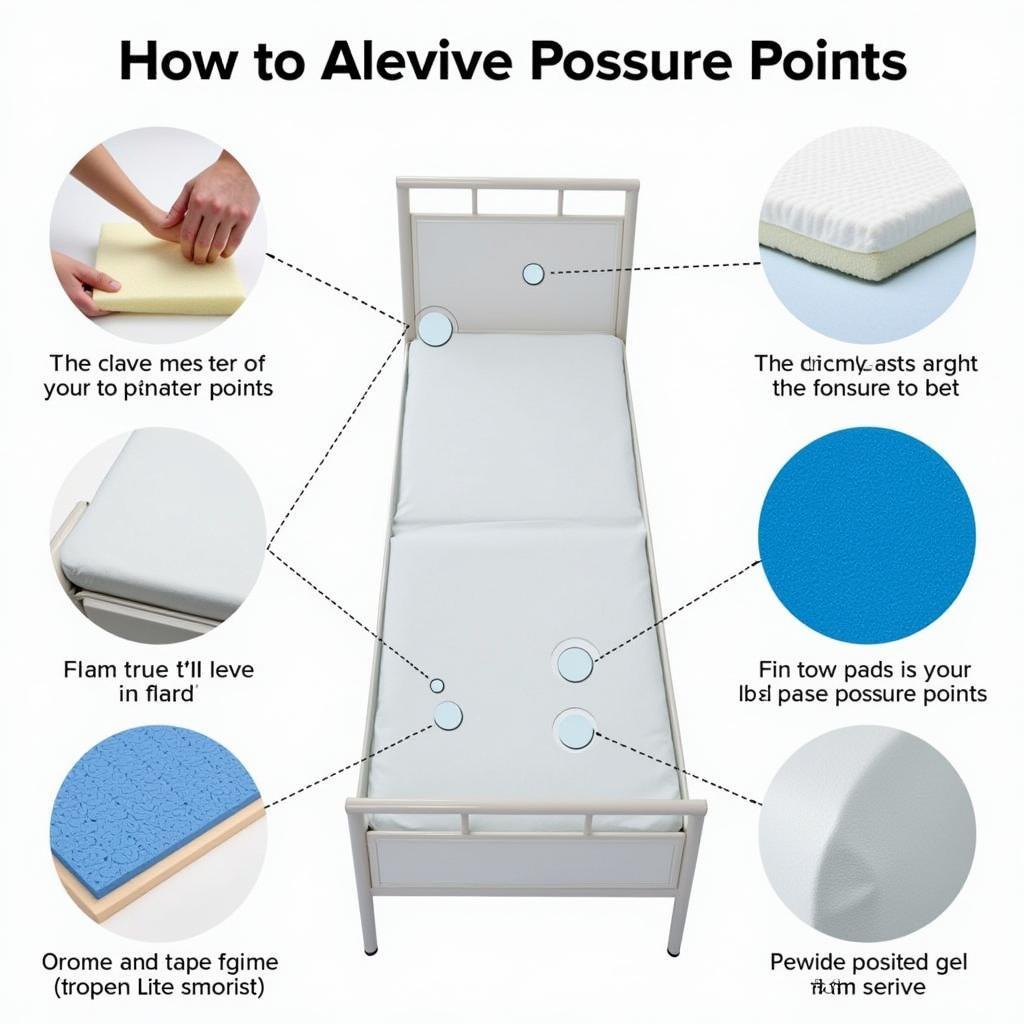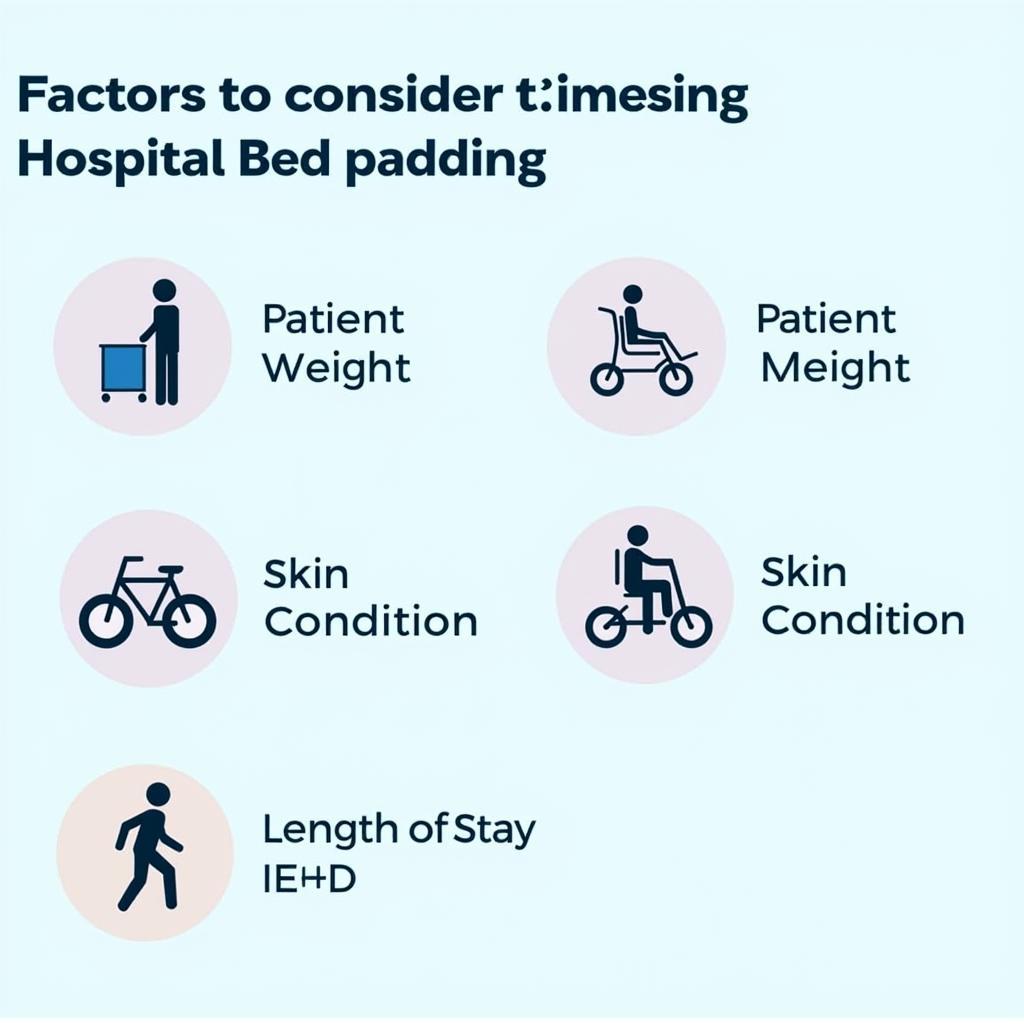Padding For Hospital Beds plays a crucial role in patient comfort and safety. It can prevent pressure sores, reduce pain, and improve overall well-being during a hospital stay. Choosing the right padding is essential for both patients and caregivers. Let’s explore the different types of padding available, their benefits, and how to select the best option.
Understanding the Importance of Hospital Bed Padding
Proper padding isn’t just about making the bed softer; it’s about preventing serious medical complications. Patients confined to a hospital bed for extended periods are at risk of developing pressure sores, also known as bedsores. These sores can be painful, difficult to treat, and even life-threatening. Padding helps distribute weight evenly, reducing pressure points and minimizing the risk of these sores. Beyond pressure sore prevention, padding can also alleviate pain from existing injuries or conditions, making it easier for patients to rest and recover. Additionally, it can provide support and stability, improving patient comfort and reducing the risk of falls. For patients struggling with mobility, the right padding can make a significant difference in their ability to reposition themselves comfortably in bed.
You might also consider a reclining hospital chair for added comfort and mobility for your patients.
 Hospital Bed Padding for Pressure Relief
Hospital Bed Padding for Pressure Relief
Types of Padding for Hospital Bed
There is a wide range of padding options available for hospital beds, each with its own advantages and disadvantages. Common types include foam padding, gel padding, air padding, and alternating pressure mattresses. Foam padding provides basic comfort and support, while gel padding offers pressure redistribution and temperature regulation. Air padding allows for adjustable firmness, and alternating pressure mattresses provide dynamic pressure relief by inflating and deflating different sections of the mattress. Choosing the right type depends on the patient’s individual needs and medical condition.
Choosing the Right Padding: Factors to Consider
Selecting the appropriate padding for a hospital bed requires careful consideration of several factors. The patient’s weight, mobility, and skin condition are all important considerations. Patients with limited mobility or fragile skin may benefit from specialized padding that provides extra pressure relief. The length of the hospital stay is also a factor. For short-term stays, basic foam padding might suffice, while long-term patients may require more advanced options like alternating pressure mattresses.
Hospital bed rail covers can also enhance patient safety and comfort.
 Choosing the Right Padding for a Hospital Bed
Choosing the Right Padding for a Hospital Bed
How to Maintain Hospital Bed Padding
Proper maintenance is essential to ensure the longevity and effectiveness of hospital bed padding. Regular cleaning and disinfection are crucial to prevent the spread of infection. Following the manufacturer’s instructions for cleaning and care is important to avoid damaging the padding. Inspecting the padding regularly for signs of wear and tear can help identify when it’s time for replacement.
Types of hospital chairs for patients are also important considerations for overall patient comfort.
Frequently Asked Questions About Hospital Bed Padding
What is the best type of padding for preventing bedsores? Alternating pressure mattresses are generally considered the most effective for preventing bedsores, as they provide dynamic pressure relief.
How often should hospital bed padding be cleaned? Hospital bed padding should be cleaned and disinfected regularly, according to the manufacturer’s instructions and hospital protocols.
Can I use regular bed padding on a hospital bed? While it’s possible, it’s generally recommended to use padding specifically designed for hospital beds, as it offers better support and pressure relief.
What is the lifespan of hospital bed padding? The lifespan varies depending on the type of padding and frequency of use. Regular inspection can help determine when replacement is necessary.
How do I choose the right size padding for a hospital bed? Measure the dimensions of the hospital bed frame to ensure a proper fit.
Are there hypoallergenic options for hospital bed padding? Yes, many manufacturers offer hypoallergenic padding options for patients with sensitivities.
What is the difference between foam and gel padding? Foam padding provides basic comfort and support, while gel padding offers better pressure redistribution and temperature regulation.
Conclusion
Padding for hospital bed is crucial for patient comfort, safety, and overall well-being. By understanding the different types of padding available and considering individual patient needs, healthcare providers can ensure optimal comfort and prevent complications like pressure sores. Remember to factor in patient needs and consider an alternating pressure mattress for hospital bed for optimal pressure relief.
Contact us at Phone Number: 02437655121, Email: [email protected] or visit us at 298 Cau Dien St., Minh Khai Ward, Bac Tu Liem Dist., Hanoi, Vietnam. We have a 24/7 customer service team ready to assist you.